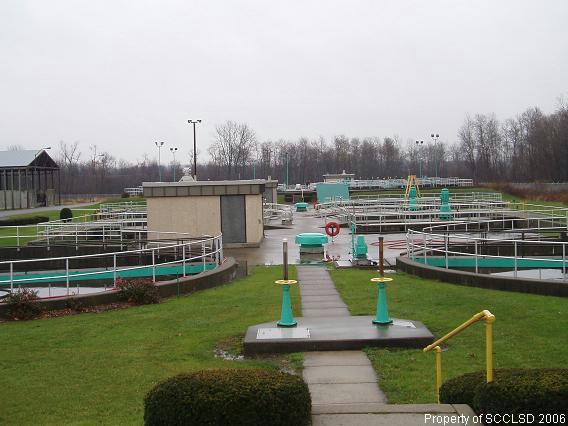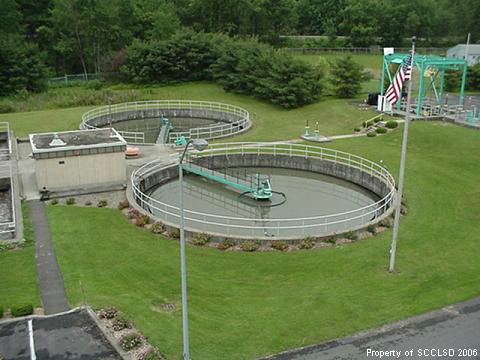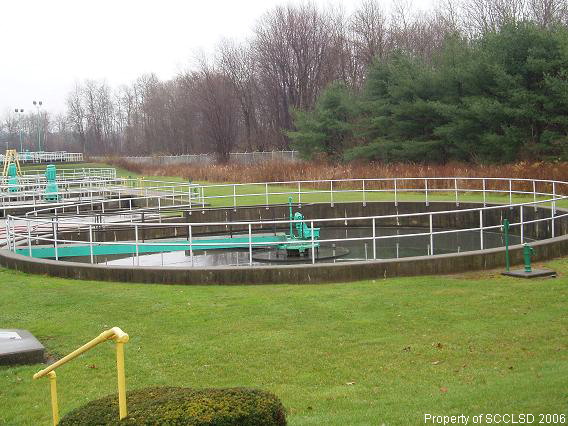 . .
. .
PRIMARY TREATMENT
From here we step down to the two Primary Clarifiers. Notice that the water can flow to these tanks by gravity so no pumps must be used for transport.
 . .
. .
The clarifiers allow time for the solids that are too light to fall out in the grit chamber to fall out here, and for floatable substances, such as grease and oil to rise to the surface and be removed by the surface skimming system. Typically, 35% of organic matter and 55% of inorganic solids are removed in the primary settling tanks. Each one of these two clarifiers holds 300,000 gallons, with a design detention time of more than 4 hours.

During that time, the suspended solids drift to the bottom of the tanks where they can be removed by any of three positive displacement piston pumps. This material, called sludge, is typically pumped to what is called a digester for further treatment before being sent to a landfill, or, as once was here at this plant, pumped to the upper level of the administration building where it was passed through large vacuum filters to remove the water. These filters used to be run during two shifts from Monday through Friday. The dried solids were then hauled to the landfill. As this equipment aged and became troublesome, we sought different methods. Currently, we are pumping our sludge to Jamestown's treatment facility via a pipeline installed which connects us to their collection system. Their plant is able to accept the additional loading and this centralized sludge processing effort is cost effective and mutually beneficial. This is the end of Primary Treatment. An additional set of techniques using biological processes must be employed next.